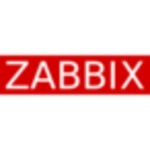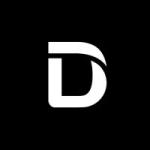What is our primary use case?
We use Auvik to map out networks and to view device health, meaning not just if it's up or down but also if there are any system-generated errors that can be listed via Simple Network Management Protocol (SNMP).
How has it helped my organization?
It saves me from having to log into each device through whatever login they may have available to them. It's a single interface for the devices.
It has greatly increased our speed. We don't have to check individual device-specific interfaces for monitoring. It also handles real-time monitoring, as opposed to a daily or hourly check. In some cases, it also allows us to find a device that's in trouble and directly connect to it from the interface. It's a huge time saver, and it does save us a fair amount of leg work.
It has helped to reduce repetitive, low-priority tasks through automation, such as checking on a device and opening and closing tickets for the devices that are in.
We now have a lot more visibility into the networks than we did before. This visibility is very important for our IT teams. The IT team would have a fairly difficult job checking all these different devices manually. In some cases, the work just wouldn't get done if it wasn't being done automatically.
What is most valuable?
A simple site view with the associated devices populating as things to add to or remove from the network is valuable. It's also nice to have it integrated with our ticketing system to create tickets in certain cases for devices that go down or have some high-level alerts, such as high CPU or overtemperature.
It's pretty easy to use its monitoring and management functions. There's a wizard that's involved when you first start it up and then you can pick. The initial network sets itself up and then you can add networks if they are available to the devices being monitored. Its ease of use is fairly important. There are some other monitoring tools that we have available to us, but they're agent-based. We can't load an agent on a switch or a router or something like that. We need some sort of SNMP interface to detect those errors. Otherwise, they would go unnoticed.
It's pretty intuitive. As soon as you pull up the site, the map comes right up. You can expand or contract different device types. In many cases, it will attempt to interrogate the device and find out what device type it is, but sometimes, you may have to set it yourself.
What needs improvement?
For the most part, it's great for visualizing the network mapping/topology for our organization. However, when complex VLAN networks are involved, sometimes, the picture can get a little cloudy. It would definitely be nice if there was some way of choosing a VLAN to view or something like that. They should definitely improve the handling of multiple networks and VLANs. I do know that the information has been gathered, and I know it's possible to give different looks. There could be a layered approach to the VLANs where you can take the default VLAN or you can toggle a switch and show, for example, a security camera VLAN or a voice-over IP VLAN. It would be nice to be able to have it pull up the information relevant to a particular network.
The GUI map view could potentially be adjusted so that we can manipulate it without necessarily having it resize every time we adjust the screen. There should be a single focused view. Currently, it resizes every time I move this bar that has the information underneath it. Sometimes, that's after me zooming in on a particular piece, which makes it difficult to find my place again.
For how long have I used the solution?
I have been using Auvik for at least a year. I'm a senior engineer for an MSP, and I use the Auvik system on a daily basis.
What do I think about the stability of the solution?
Auvik's stability is great. They do run regular maintenance, and they always have an announcement about the maintenance ahead of time.
What do I think about the scalability of the solution?
Its scalability is great. You're not limited to a number of devices, etc. Your only limitation is whether or not it can see the networks that you're trying to track. Because this is a cloud-based solution, it wouldn't be good for somebody who has an isolated network or something that's not on the internet. Other than that, whether you've got 5 workstations on the small network with 1 switch and 1 router, or if you've got 6 switches, 30 telephones, 7 printers, and 18 access points, it shows them all irrespective of whether it's a big one or a small one. The pricing on it is based on the devices. A small network is going to have a smaller cost than a larger organization.
It's deployed across multiple clients that we have. Each one of our nine different sites is a different client. Of those clients, none of them has two sites. So, it's not necessary that we have multiple site issues. We have nine sites and nine clients.
How are customer service and support?
Normally, we have been just speaking to the sales team. So, contacting the sales rep is something that we've done, but there is a knowledge base that is fairly fantastic. They have it set up for a bunch of different device types from different manufacturers. You can see how to configure them so that they're sending the right information to Auvik. Each one of them gives step-by-step guides on how to integrate that device with Auvik.
There is obviously technical support, but I have not had to use it, which is great. The support is available right from the interface. You just go to the website, and they give you the phone number, and there you go. It would be fairly easy. You can do it through a message or through their phone number.
Their sales support is fairly techy. They are not just managers. They know their devices and their software. I would rate the support provided by their sales engineers at least an eight out of ten. They were easily able to answer any of my questions. However, not a whole lot of questions came up because the product pretty much runs itself. There are how-to guides on adding the capabilities of new devices. If there's a router, a firewall, or something else, there are instructions on how to configure it to connect to Auvik.
How would you rate customer service and support?
Which solution did I use previously and why did I switch?
I have, but they belonged to certain ticketing systems, such as HP OpenView, etc. HP OpenView comes into play if you only have one network to manage. Currently, I've got nine different networks under Auvik, and for me, it's a switch between them. It's as simple as just dropping down a box and looking at the next one. However, because it's integrated with my ticketing API, I don't necessarily have to drill down into it. I'll receive tickets for certain devices that are having issues.
How was the initial setup?
It was very straightforward. There was some hand-holding that they needed to do for us in order to integrate it with our ticketing system, but so far, setting up Auvik, starting a new site, and having that site inventoried and discovered has been mostly wizard-based. So, it's not difficult. You probably don't even need to be familiar with the technology to set it up.
We implemented it out of the box, but there are checkpoints where you authorize networks to be scanned. There is a stop there, but it's not too big a deal.
It probably took about two hours to set everything up for the first client, and then after that, each additional client would be about half an hour.
What about the implementation team?
Auvik had a sales team that assisted us in the initial setup. In terms of the staff involved, I and the owner of my franchise company were there. He didn't need to be there. He just wanted to be there.
It doesn't require any maintenance from our side.
What was our ROI?
It saves me time on a daily basis. So, there's a great time-to-value. A fair amount of my time has been spared using this tool.
What's my experience with pricing, setup cost, and licensing?
Its licensing is very fair. The devices that stand to gain the most benefit from this product are the ones that are billed. In the case of routers, switches, and firewalls, I won't necessarily have the ability to put a management agent on them to gather errors and activity logs. This type of solution is a requirement for me to properly monitor and manage these devices. The devices that aren't being billed are workstation servers, etc. For those devices, I can put agents on them to monitor their health. It has a fair billing structure. Additionally, the billing seems to only happen for devices that I have linked to my ticketing API, in such a way that I could stand a benefit from it.
To someone comparing network monitoring solutions but concerned about pricing, I would say that when comparing with other applications, they need to check if the other solutions are able to integrate with their ticketing system APIs. They also need to check how many device types they expect to log into during any one of their days, in order to get a true look at the device health of the networks that they have under them.
Which other solutions did I evaluate?
I did know of one other option available, but we did not evaluate or entertain any others before we went with Auvik. It was presented to us as a trial, and we were simply impressed.
What other advice do I have?
The best advice is to make sure that all the devices that you want to come up in the map view have been properly configured to send their SNMP data to the collector.
Auvik helps to keep device inventory up to date, but typically, we do device inventory in a different way. It's nice to be able to validate the inventory, but in most cases, inventories are handled by different tasks. Auvik is invaluable for taking the initial inventory for a new client, but normally, we would go with a different inventory process, and we would use this to validate that going forward. It helps with the building of the inventory, and it helps to validate the inventory as it progresses.
I would rate Auvik at least an eight out of ten.
Disclosure: PeerSpot contacted the reviewer to collect the review and to validate authenticity. The reviewer was referred by the vendor, but the review is not subject to editing or approval by the vendor.




















